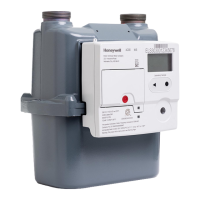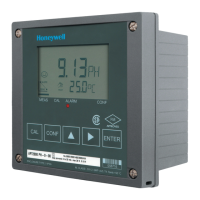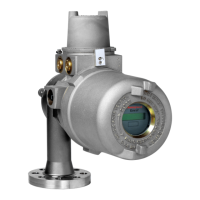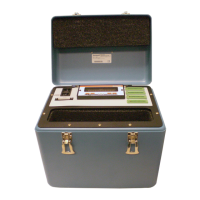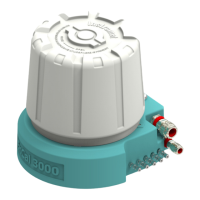55
It is highly recommended that these relays be connected to a continuously monitored
alarm system. They verify alarm conditions and operational status separately from all other
alarm outputs. If other communication links fail, they can provide important information.
5.5.3. Relay terminals and activation options
5.5.3.1.
Relay terminals
Since the output relays are DPDT, they may be connected to two separate devices, and
each device can have a separate DC or AC power loop wired through the common
(labeled COM) terminals. Each set of terminals provides the choice of wiring to the
normally open (NO) or normally closed (NC) contacts. Most users wire to the NO terminals
since the relay state is NC when de-energized and NO when activated. However, if your
control logic allows you to trip on signal loss, you can wire to the NC terminals. This has
the benefit of alarming if a wire is broken or disconnected.
5.5.3.2.
Fail-safe configuration
The software can be configured to reverse the relay logic so that all the output relays are
usually energized. You would wire to the NO terminals. An Alarm 1 or Alarm 2 condition,
a broken or disconnected wire, or a failure of the relay would activate the alarm device,
shutdown sequence, and/or control logic for that relay. This is a fail-safe implementation,
and it requires a change in Honeywell's ACM 150 monitor software configuration.
NOTE
If you use the fail-safe configuration, all the ACM 150 monitor output relays will
activate on a power loss, which will likely cause widespread alarms and gas
shutdowns. Even a computer reboot will cause this to occur. A bypass switch must
be utilized to maintain power in the wire loop so that the ACM 150 monitor can be
shut down for service or when loading new software.
5.5.3.3.
Non-latching vs. latching configuration
In the standard configuration, the ACM 150 monitor output relays are non-latching. This
means they reset automatically when the condition (alarms, malfunction, power loss)
returns to normal.
The software configuration allows a change to latching relays. The latching relay contacts
will remain activated when the condition returns to normal. They can only be reset from
the ACM 150 monitor touchscreen or via the network remote computer. This is not
recommended if you have latching relays in your control logic because it would require a
manual reset at two locations to silence alarms. However, if your control logic does not
latch, i.e., holding the condition until manually reset, you should have the ACM 150 monitor
configured with latching relays. This is especially important if the ACM 150 monitor alarm
relays directly activate your facility's automatic gas shutdown.

